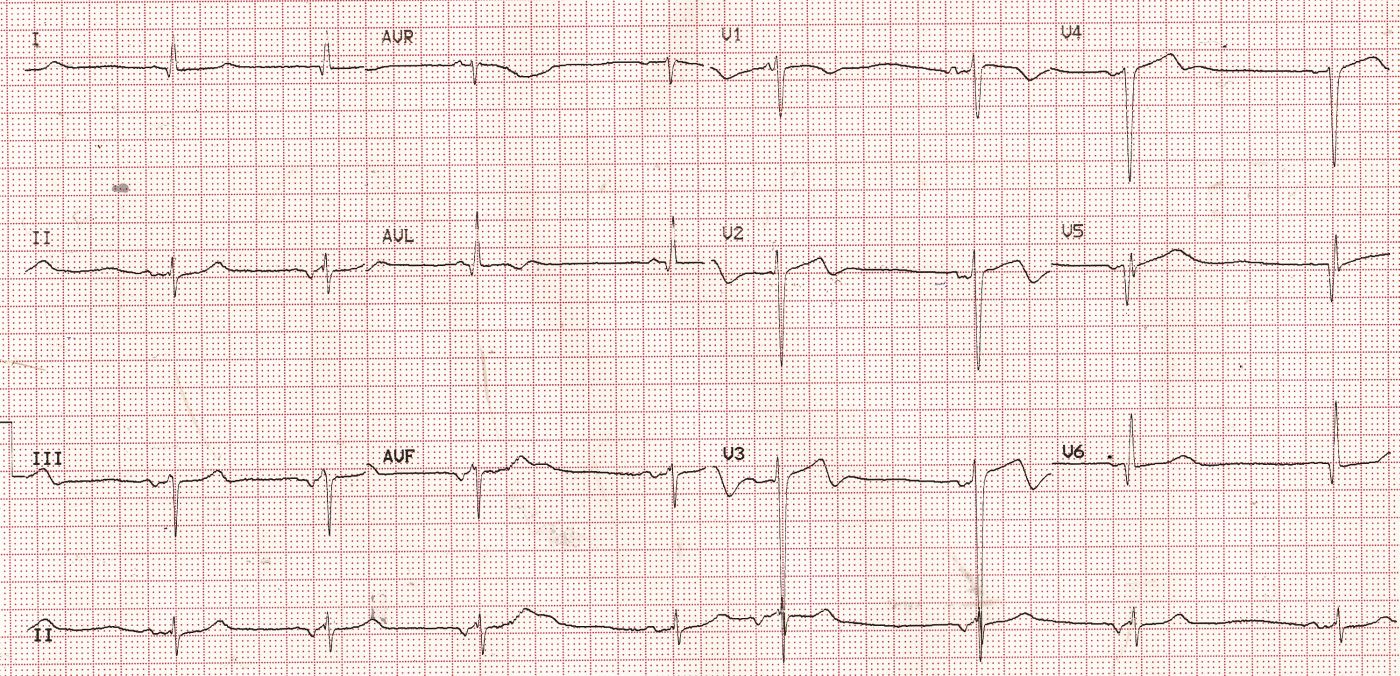ECG Quiz with discussion on Wellens syndrome
ECG Quiz with discussion on Wellens Syndrome
What are the important findings and diagnosis?
First beat in the rhythm strip is a sinus beat and so is the fourth beat as well as the last beat, with upright P waves and a normal PR interval. 2nd, 3rd, 5th, 6th and 7th beats have inverted P waves with a shorter PR interval. These beats have inverted P waves in other inferior leads as well as V4-V6. These P waves are possibly originating from the left atrium (left atrial rhythm). In addition there is prolongation of the QT interval (note the wide and splayed T wave in aVR) and biphasic T waves in anterior leads giving a suggestion of Wellens syndrome. Wellens syndrome is indicative of tight stenosis of proximal left anterior descending coronary artery. Lateral leads show Q waves. QRS axis is a bit leftward, suggesting left anterior hemiblock.
Original description of Wellens syndrome was by de Zwaan C, Wellens HJ et al in 1982 in a paper published in American Heart Journal [1]. Twelve of the sixteen (75%) in their group who were not operated on, developed an extensive anterior wall myocardial infarction within a few weeks. So they suggested urgent coronary angiography and if possible coronary revascularization in unstable angina patients having these type of ECG changes. It has also been called LAD coronary syndrome or widowmaker [2].
Types A and B of Wellens syndrome has been described. Type A has biphasic T wave in V2 and V3 while type B has deep T inversion in these leads [2]. Going by this classification, the ECG illustrated belongs to Type A Wellens syndrome.
References
- de Zwaan C, Bär FW, Wellens HJ. Characteristic electrocardiographic pattern indicating a critical stenosis high in left anterior descending coronary artery in patients admitted because of impending myocardial infarction. Am Heart J. 1982; 103:730–736.
- Al-Assaf O, Abdulghani M, Musa A, AlJallaf M. Wellen’s Syndrome: The Life-Threatening Diagnosis. Circulation. 2019 Nov 26;140(22):1851-1852.

